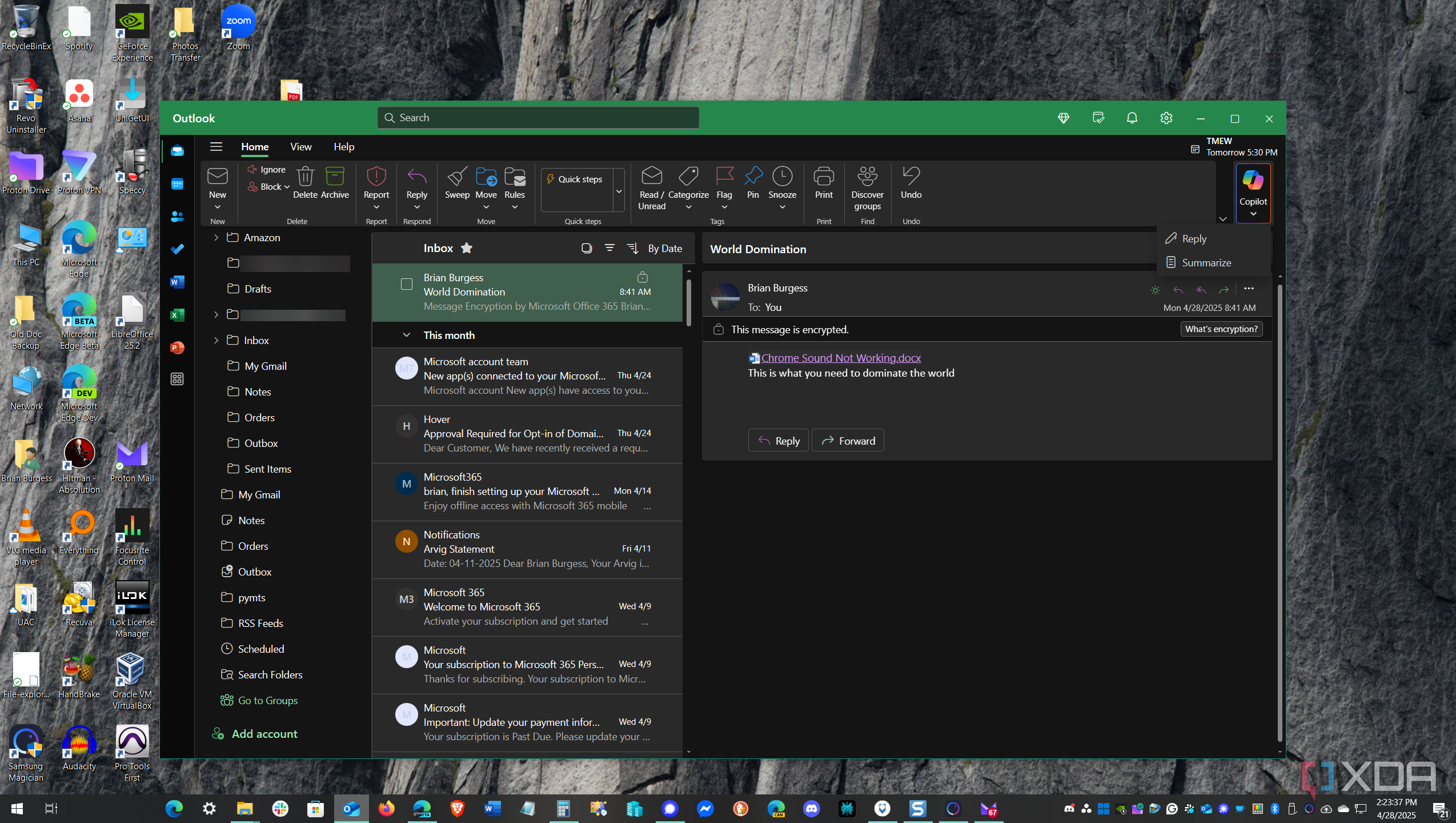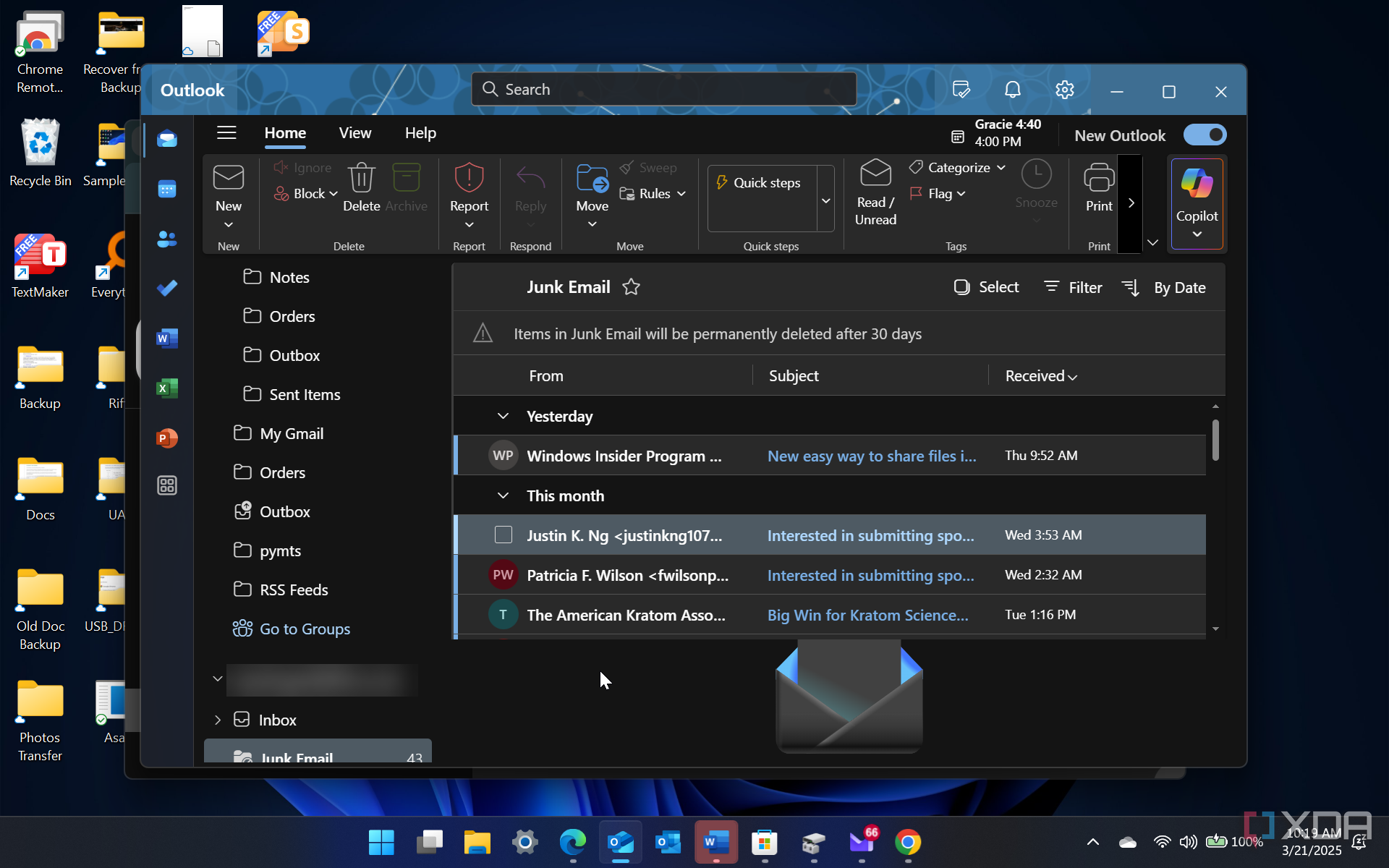Over the last few years, I've shifted most of my digital life onto servers I manage. My media streams through Plex, my notes live in a self-hosted editor, my files sync via Nextcloud, and even my password manager runs on hardware I maintain.
But when it comes to email, I hand off responsibility to someone else. Not because I do not know how to self-host email, but because doing it right is a full-time job with thankless results and little room for error. I have learned the hard way that email is a system where being almost right is still a complete failure, and it's just not worth the effort to me. Here’s why I stopped trying, and if you've been considering hosting your own email, you should too.

5 open-source email clients that could replace Gmail
The Gmail web interface is usually fast and easy, but your needs may leave you wanting here. Here are open-source email clients to replace Gmail.
3 The protocols are a nightmare
A fragile system that was never designed for modern use

Email was not built for today’s internet. Its foundation rests on outdated protocols like SMTP, POP3, and IMAP, created long before spam, phishing, and authentication were serious problems. To patch those holes, we layered on SPF, DKIM, DMARC, and other technical workarounds. Together, they form a mess of overlapping standards that are hard to understand, harder to implement, and still far from reliable in a self-hosted setting. For self-hosters, that means spending hours writing DNS records, tuning authentication headers, and reading outdated documentation. One typo in a TXT record can kill deliverability. One misconfigured TLS handshake can cause entire domains to reject your messages. And even if you get everything right, you are still at the mercy of trust scoring systems you will never see.
If your IP range is shared with a spammer, your messages may go nowhere. If your server lacks long-term reputation history, major providers may silently flag everything you send. The worst part is that you will not get a bounce back or warning. You will just be ignored. Deliverability is the wall most people hit when they try to self-host mail. And once it hits you, and it likely will, there is no easy fix.
2 Email has zero tolerance for downtime
Even brief outages can have big consequences

When a self-hosted photo server goes down, nothing breaks. If your to-do list app crashes, you wait and refresh. But email is not casual. It is the backbone of every account recovery, billing notice, and urgent message. A few minutes of downtime can lead to missed opportunities or locked accounts.
Self-hosted mail servers demand uptime close to 100 percent. That means redundant MX records, constant uptime monitoring, frequent backups, and automated failover. Anything less puts your communication at risk. Unlike other systems, email does not guarantee a retry. Some servers will try again for hours, others will just drop the message if they cannot reach your server on the first attempt.
Cloud email providers run clusters across multiple data centers with instant failover and automatic scaling. Most self-hosters run a single VPS or a cheap bare-metal box. That setup is fine for lightweight services. It is not built to handle something as critical as email. Even when your server is healthy, your provider might have network issues that leave you offline and unreachable.
1 Spam filtering is an unwinnable war
Big providers use AI, while you are left with blunt tools

Spam is not a solved problem. It just gets managed better at scale. Gmail, Outlook, and ProtonMail use AI trained on billions of messages to filter out noise and detect patterns in real time. They constantly adjust to new tactics, emerging threats, and sender behavior. You do not see this work because it happens in the background.
If you self-host, you rely on static filters like SpamAssassin. They help with obvious junk but miss subtle attacks and change-resistant campaigns. You are left tuning rules by hand, checking logs, and adjusting thresholds. Miss a few false positives, and someone might stop emailing you. Miss a few false negatives, and your inbox becomes unusable.
You are also a more attractive target. Spammers test their messages on small servers first. A misstep in your relay settings can make your domain part of a spam campaign without your knowledge. And once you are on a blacklist, getting off takes time and effort. Even if you avoid disaster, you still spend hours babysitting filters, taking hours away from actual productivity.
Some battles are not worth fighting
I still believe in self-hosting and trust it more than I trust most cloud platforms. But email is the exception. It's just not the kind of service I can count on to run on self-hosted hardware without infinite fussing around and less than rock-solid results.
So, I use a paid provider that gets the basics right — one that values privacy, respects standards, and gives me peace of mind. I self-host almost everything—just not my inbox.
.png)




